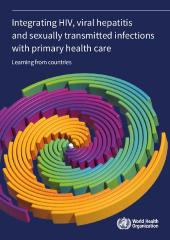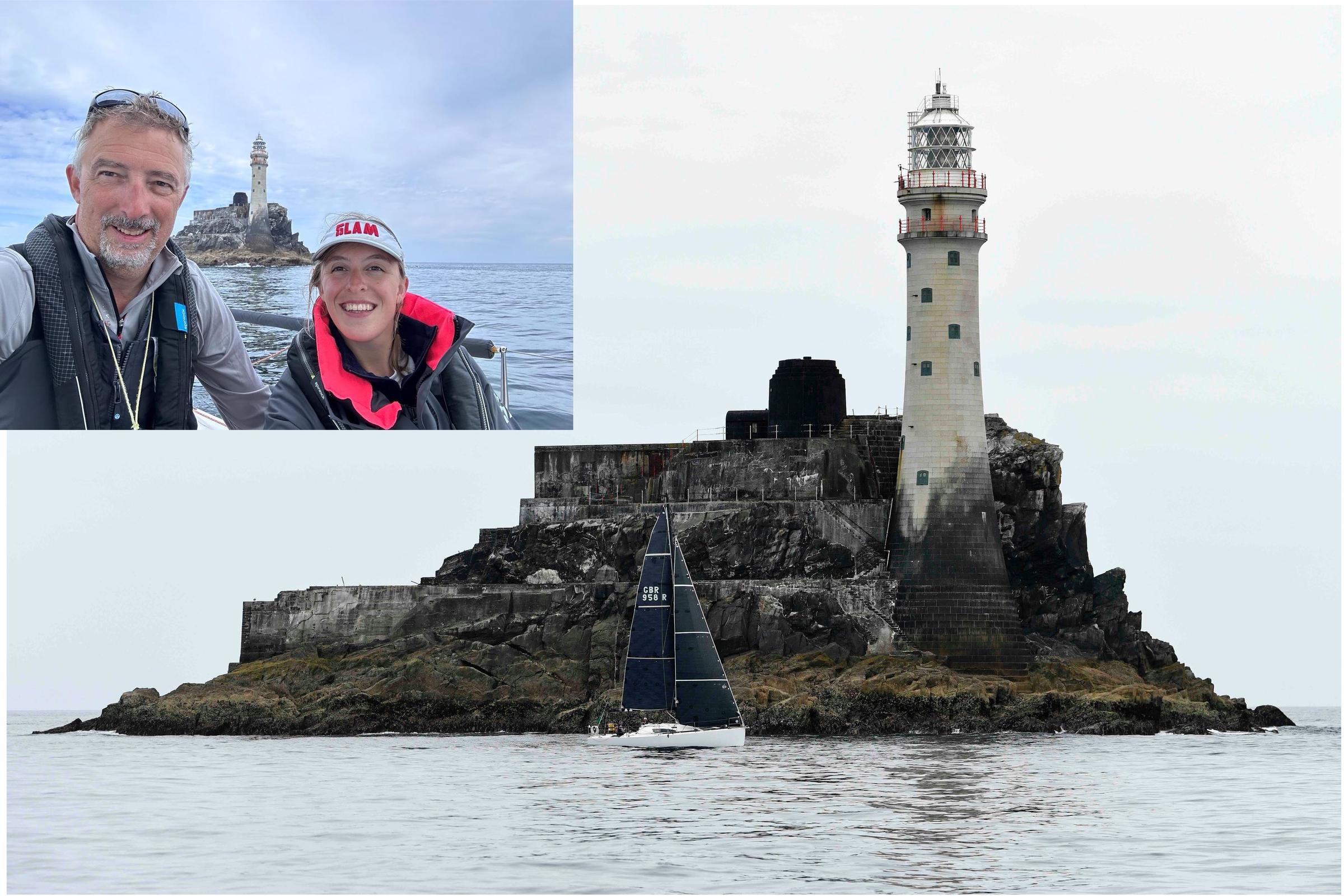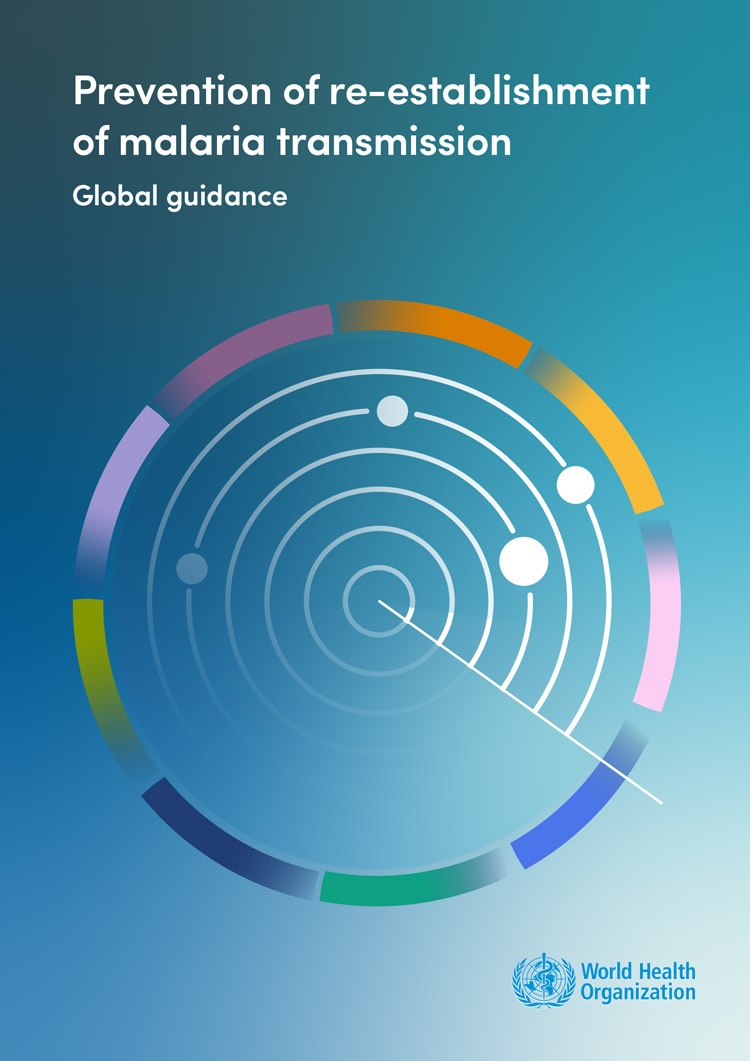Introduction
Clinically, infertility is identified when a couple fails to achieve pregnancy after 12 consecutive months of unprotected and regular sexual activity.1 An estimated 17.5% of women of reproductive age worldwide are affected by female infertility, underscoring its global prevalence.2 In the United States, its prevalence is estimated at around 15.5%, with an annual increase of 0.37%.3 This reproductive health issue can precipitate a spectrum of adverse consequences, including psychological distress, social stigma, economic burden, and marital discord.4,5 Recognizing its public health significance, the Centers for Illness Control and Avoidance (CDC) has prioritized the determination and administration of infertility.6 In spite of the fact that ovulatory brokenness and tubal pathology are the foremost etiologies, lifestyle factors such as smoking, progressed age, and liquor utilization encourage compound the chance of infertility,7–9 Whereas the exact instruments fundamental these affiliations stay not completely caught on, illustrating the hazard components is significant for moving forward regenerative results and moderating the global impact of infertility.
The ZJU index is an innovative metric designed to assess lipid metabolism, glycemic control, and liver function by integrating anthropometric measurements with standard laboratory parameters. Originally introduced by Wang et al10 for predicting non-alcoholic fatty liver disease (NAFLD) in Chinese cohorts, the index incorporates aspartate aminotransferase (AST), BMI, triglycerides (TG), alanine aminotransferase (ALT), and blood glucose levels. This composite index offers a comprehensive evaluation of metabolic health, outperforming isolated biochemical markers in detecting patterns of metabolic dysfunction and associated health risks. Previous studies have established significant correlations between the ZJU index and conditions such as sarcopenia, obstructive sleep apnea (OSA), and cholelithiasis.11–13 Recent cohort investigations further underscore its predictive capacity in overweight women in Western populations.14 Given its strong association with obesity and metabolic dysregulation, the ZJU index serves as a valuable surrogate for insulin resistance,15 a well-recognized factor implicated in infertility.16,17
Despite these promising attributes, the relationship between the ZJU index and the risk of infertility has yet to be explored. Given its ability to reflect early metabolic disturbances such as hyperglycemia, obesity, and dyslipidemia, the ZJU index offers a holistic assessment of metabolic health and was therefore selected over other individual markers. Furthermore, a growing body of evidence has demonstrated that components of metabolic dysfunction—particularly insulin resistance, central obesity, and lipid imbalance—are closely associated with impaired female reproductive function and increased infertility risk. These findings support the rationale for investigating the ZJU index as a potential predictor of infertility in reproductive-aged women.18–21 To address this gap, we assessed information from the NHANES beneath the theory that increased ZJU index values are related with a more prominent rate of infertility. This research points to explain the affiliation between the ZJU index and infertility among reproductive-aged women within the Joined together States, drawing on a huge and broadly representative sample.
Method
Data Source and Study Participates
This examination utilized information from four cycles of the NHANES conducted between 2013 and 2018, with datasets freely accessible on the CDC site (www.cdc.gov/nchs/nhanes). Among the 29,400 people studied, participants younger than 18 or older than 45 years (n = 21,186) and male respondents (n = 3,891) were avoided. Moreover, people missing data on infertility status or the ZJU index were overlooked (n = 2,785). Eventually, the ultimate explanatory test comprised 1,538 members (Figure 1).
|
Figure 1 A flow diagram of eligible participant selection in the National Health and Nutrition Examination Survey.
|
The Definition of Infertility
Consistent with previous studies,22 infertility was defined as a self-reported inability to conceive after attempting for more than one year. Respondents who confirmed they had been trying to conceive for more than a year were categorized as infertile in the study. Conversely, those who denied attempting conception for this duration were classified as non-infertile.
Measurement of ZJU Index
The ZJU index was originally developed to predict the risk of NAFLD in Chinese populations.10 It is calculated using the formula: ZJU index = BMI (kg/m2) + TG (mmol/L) + FPG (mmol/L) (+ 2 if females) + ALT(IU/L)/AST(IU/L) ratio×3.12,23 The multiplication factor of 3 for the ALT/AST ratio was empirically derived to enhance discriminatory power, reflecting the relative importance of liver enzyme imbalance in predicting metabolic dysfunction. The additional 2 points for females account for sex-based physiological differences in liver enzyme levels and body composition that influence NAFLD risk. These weights were determined based on model performance in the original derivation cohort.
Covariates
A extend of covariates recognized in earlier research was included in the analysis. These factors included socio-demographic factors such as age, race, instructive fulfillment, conjugal status, and poverty-to-income proportion (PIR) as well as health-related conditions counting hypertension, diabetes, hyperlipidemia, Physical activity and dietary habits. Race was self-reported and classified into four bunches: non-Hispanic White, non-Hispanic Dark, Mexican American, and other races. Instructive achievement was dichotomized into two categories: underneath tall school and tall school confirmation or higher. Diabetes was characterized by a past history of diabetes, an HbA1c level ≥6.5%, or a fasting blood glucose level ≥126 mg/dL. Hypertension was recognized based on a self-reported history, the utilize of antihypertensive medicines, a systolic blood weight (SBP) ≥140 mmHg, or a diastolic blood weight (DBP) ≥90 mmHg. Active physical activity was categorized as engaging in more than 599 minutes of total activity, over 149 minutes of moderate-intensity activity, or more than 74 minutes of vigorous-intensity activity per week. Dietary intake variables—including energy, protein, carbohydrates, total sugars, dietary fiber, and total fat—were assessed using two 24-hour dietary recall interviews and averaged over two days. Table S1 provides detailed information on covariates.
Statistical Analysis
Factual examinations were performed utilizing R program (adaptation 4.3.1). To guarantee national representativeness, test weights prescribed by the NCHS were connected. Contrasts between barren and non-infertile bunches were surveyed utilizing weighted Student’s t-test’s for ceaseless factors and weighted chi-square tests for categorical variables.24 The missing data were interpolated Multiple imputation by chained equations (MICE) and the primary analysis was repeated25 (Table S2). The relationship between the ZJU index and infertility was inspected utilizing four weighted multivariable relapse models: Model 1 was unadjusted; Model 2 adjusted for statistic variables counting age, instructive level, conjugal status, race/ethnicity, and PIR; and Model 3 encourage adjusted for health-related factors such as hypertension, diabetes, and hyperlipidemia. Model 4 adjusted for Physical activity and dietary habits. Moreover, smooth bend fitting procedures were utilized to investigate the potential straight affiliation between the ZJU index and infertility. Chances proportions (ORs) were computed for each one-point increase within the ZJU index. Stratified multivariable relapse examinations were conducted to advance portray subgroup impacts after altering for components such as age, sex, instruction, conjugal status, individual wage proportion, and race. Measurable importance was decided at a two-sided p-value ≤0.05.
Results
Baseline Characteristics of the Study Population
The study encompassed 1,538 participants (weighted to represent 15,986,966 individuals), among whom approximately 12% reported infertility. Notably, infertility was more prevalent among women aged 35–45, with 54% of cases occurring in this age group, compared to 46% among those younger than 35. Additionally, 80% of the infertile participants were married. Factors such as hypertension, diabetes, and an elevated ZJU index were significantly associated with an increased prevalence of infertility (P < 0.05). Participants diagnosed with infertility exhibited statistically higher ZJU index (P < 0.05). A comprehensive overview of the baseline characteristics is provided in Table 1.
 |
Table 1 Baseline Characteristics of All Participants Were Stratified by Infertility, Weighted
|
Relationship Between ZJU Index and Infertility
Table 2 presents the findings from multivariable logistic regression analyses, which illustrate the affiliation between the ZJU index and infertility. Particularly, Model 4 uncovered a positive relationship, with an chances proportion (OR) of 1.04 (95% CI: 1.00–1.07, P<0.05) for each one-point increment within the ZJU index. Besides, the quality of this affiliation opened up across higher quantiles, especially within the third tertile (T3), where the OR come to 2.31 (95% CI: 1.14–4.47) compared to the most reduced tertile (T1). In addition, smooth bend fitting investigations affirmed a straight positive relationship between the ZJU index and infertility (nonlinear P = 0.755) (Figure 2).
 |
Table 2 Adjusted Odds Ratios (ORs) of ZJU Index and Infertility, Weighted
|
 |
Figure 2 Dose-response relationships between ZJU index and infertility. OR (solid lines) and 95% confidence levels (shaded areas) were adjusted for age, education level, marital status, PIR, race, hypertension, diabetes, hyperlipidemia, Physical activity, Energy intake, protein intake, carbohydrate intake, total sugars intake, dietary fiber intake, and total fat intake.
|
Subgroup Analysis
Figure 3 displays the results of subgroup analyses exploring the association between the ZJU index and infertility, incorporating a range of demographic and lifestyle variables such as age, education level, marital status, poverty-to-income ratio (PIR), race, hypertension, diabetes, hyperlipidemia and Physical activity. These examinations assessed both interaction impacts and the consistency of the affiliation over subgroups. The discoveries reliably illustrated a tireless positive affiliation between the ZJU index and infertility, with no measurably critical interaction impacts watched for the stratifying factors (P > 0.05). This strength underscores the steadiness of the affiliation over different statistic profiles.
 |
Figure 3 Subgroup analysis between ZJU index and infertility. ORs were calculated as each standard deviation increased in the ZJU index. Analyses were adjusted for age, education level, marital status, PIR, race, hypertension, diabetes, hyperlipidemia, Physical activity.
|
Discussion
Our cross‐sectional examination uncovered a direct positive affiliation between the ZJU index and the chance of infertility among reproductive aged women within the Joined together States. Overall, each one unit increment within the ZJU index compared to a 4% rise within the chance of infertility, a relationship that remained strong over subgroup investigations stratified by age, instruction level, conjugal status, PIR, race, hypertension, diabetes, and hyperlipidemia.
A number of potential components may underlie the watched positive affiliation between the ZJU index and infertility, especially those related to weight and metabolic unsettling influences. Fat tissue, the essential location for vitality capacity and mobilization, plays a basic part in keeping up vitality homeostasis. Excessive vitality capacity as fat leads to weight, a condition emphatically connected not as it were to unremitting illnesses such as sort 2 diabetes, cardiovascular clutters, and respiratory illnesses,26,27 but moreover to impeded regenerative work. Corpulence is known to diminish ripeness; compared with women of typical weight, those with a BMI>30 kg/m² confront a 2.7-fold expanded chance of infertility and a 25–37% higher chance of unsuccessful labor. The unfavorable regenerative impacts of weight envelop disturbances of the hypothalamic–pituitary–ovarian (HPO) axis, oocyte development, embryonic and fetal advancement, as well as obesity-induced aggravation and epigenetic adjustments.28 Particularly, hefty women show altogether lower amplitudes and cruel levels of luteinizing hormone (LH) nearby lifted circulating affront levels.29,30 Affront, which improves androgen union, advances the aromatization of androgens to estrogens within the nearness of overabundance fat tissue, in this manner applying negative input on the HPO hub. Randomized trials mimicking obesity-related metabolic disorder have illustrated that endocrine disturbances and subsequently unfavorable regenerative outcomes may be specifically intervened by HPO pivot dysfunction.31 Moreover, considers in obese mice show that the characteristic pregnancy rate, uniquely diminished by high-fat diet-induced corpulence, can be somewhat reestablished taking after exogenous gonadotropin stimulation.32,33 Corpulence moreover shows up to compromise oocyte quality. Compared with women within the ordinary BMI run, seriously obese people are at expanded hazard for oocyte shaft variations from the norm and chromosomal misalignment.34–36 In diet-induced weight (DIO) mouse models, irregular oocytes regularly show tall rates of aneuploidy, axle disorganization, and misaligned metaphase chromosomes.37 These variations are related with consequent metabolic changes in blastocysts, such as decreased glucose utilization and lifted triglyceride levels.38 Moreover, Obesity may advance chronic aggravation inside the female regenerative tract. Fat tissue harbors specialized safe cells, and obesity-induced inflammation a persistent, low-grade reaction accelerated by supplement excess39 is transcendently interceded by macrophages.40 The following generation of responsive oxygen species (ROS) such as superoxide anions (O₂⁻), hydroxyl radicals (OH), and hydrogen peroxide (H₂O₂) can initiate oxidative push. Over the top ROS inside the ovary is known to disable oocyte development, lessen oocyte quality, trigger granulosa cell apoptosis, and quicken luteal relapse.
Past these coordinate impacts, weight can modify central metabolic control. The brain tweaks vitality adjust through hormones inferred from fat tissue and the gastrointestinal tract, such as leptin, affront, and ghrelin, which administer craving, satiety, and vitality expenditure.41,42 These metabolic hormones, unpredictably connected with fat capacity, play essential parts in long-term weight control. For occasion, leptin, an adipose-derived hormone, applies negative criticism on the hypothalamus to direct nourishment admissions and vitality expenditure.43 In corpulence, leptin resistance disturbs these administrative pathways, driving to impeded control of vitality homeostasis.44–46 Besides, glucagon-like peptide-1 (GLP-1), a intestine hormone basic for keeping up glucose homeostasis, acts by means of its receptor expressed within the brain, gastrointestinal tract, and pancreas—to invigorate affront discharge and smother glucagon discharge, in this manner decreasing endogenous glucose generation. This gut brain pivot, possibly interceded by NPY/Agouti-related peptide (AgRP) and POMC neurons,47–49 may too be disturbed in weight, disabling the emission of key intestine peptides such as AgRP and peptide YY (PYY), which are significant for adjusting nourishment admissions and metabolic rate.50 Weight is regularly accompanied by impeded glucose resistance insulin resistance(IR), components that are collectively named metabolic disorder. These chance determinants are broadly respected as having pernicious impacts on both richness and pregnancy results.51 The instruments connecting infertility with IR are multifactorial. IR may compromise oocyte quality by disabling mitochondrial work, disturbing affront signaling pathways, and modifying glucose metabolism.52 Mitochondrial brokenness initiated by IR creates receptive oxygen species (ROS), advance disturbing glucose take-up and making a criticism circle of metabolic dysfunction.53 Hyperandrogenism, particularly when related with polycystic ovary disorder (PCOS), essentially contributes to infertility. Raised androgen levels disturb glucose and affront digestion system, disable the liver’s blend of sex hormone-binding globulin, and influence the HPO hub. This obstructions influences the control of development variables counting IGF1, GDF9, activins, and inhibins, which are basic for regenerative function.54,55 In women analyzed with PCOS characterized by hoisted androgen levels, treatment modalities like flutamide have illustrated viability in improving ripeness outcomes.56 The mTOR protein, a central controller of supplement dispersion and metabolism, is embroiled within the direction of early embryonic improvement. When embryos are refined with mTOR, their advancement ceases at the blastocyst arrange, particularly between days 9 and 12 of development.57 mTOR works in conjunction with related signaling pathways to control cellular development and modified cell death.58 Oxidative push activated by IR can start the enactment of the mTOR pathway,59 possibly ending early embryonic advancement. Moreover, IR impedes the uterine receptivity for developing life implantation, which adversely impacts female ripeness. Studies suggest that IR disturbs the vitality adjust within the endometrium, coming about in inadequately vitality supply in spite of raised metabolic demands.60 Studies have shown IR disrupts the endometrial environment by damaging stromal cells and elevating the mitochondrial membrane potential, which compromises the process of endometrial decidualization.61,62 Key pathways implicated in insulin resistance encompass the actions of insulin receptor substrate 1 (IRS1), phosphatidylinositol-3-kinase (PI3K), and AMP-activated protein kinase (AMPK), play critical roles in these processes. Inhibition of the Akt pathway, which is regulated by AMPK suppression, may offer potential therapeutic targets for improving fertility outcomes. Furthermore, targeting the receptor for advanced glycation end products (RAGE) has proven to augment insulin sensitivity, potentially improving insulin metabolism and addressing IR.63
In addition to representing overall metabolic dysfunction, components of the ZJU index—ALT and AST—may independently influence reproductive outcomes. Elevated liver enzymes are indicative of hepatic inflammation or dysfunction, which is increasingly recognized as a contributor to endocrine imbalance.64 Abnormal liver function can alter the synthesis and metabolism of sex hormone-binding globulin (SHBG), disturb estrogen clearance, and indirectly affect androgen levels,65,66 all of which may disrupt the HPO axis.
Furthermore, hepatic dysfunction is commonly observed in metabolic disorders such as NAFLD and PCOS, both of which have been independently associated with reduced fertility and an increased risk of infertility.67,68 These conditions often coexist with metabolic abnormalities, including insulin resistance and central obesity, which are themselves known contributors to impaired reproductive function.16,69 The ALT/AST ratio, a key component of the ZJU index, serves as a surrogate marker of hepatic metabolic stress and may therefore reflect underlying hepatic involvement in reproductive dysfunction. By capturing this dimension, the ZJU index potentially provides a more comprehensive assessment of infertility risk that extends beyond the traditional markers of obesity and insulin resistance. This broader pathophysiological insight may help explain the robust association observed between higher ZJU index values and increased infertility risk in our study.The ALT/AST ratio incorporated in the ZJU index may thus capture hepatic contributions to reproductive dysfunction beyond the effects of obesity and insulin resistance alone.
As far as we are aware, this is the first investigation to assess the relationship between the ZJU index and the risk of infertility using a large, nationally representative dataset. While the ZJU index has been previously validated in predicting metabolic diseases such as NAFLD and insulin resistance, its application in the domain of reproductive health represents a novel direction. These findings not only extend the utility of the ZJU index but also highlight its potential as an accessible biomarker for early infertility screening in clinical practice. However, given the cross-sectional nature of our analysis, future prospective cohort studies and mechanistic investigations are warranted to validate these associations and elucidate potential causal pathways.
Study Strengths and Limitations
This study benefits from the use of NHANES data, which provides a nationally representative sample and allows for generalization across diverse demographic groups. Rigorous statistical adjustments were applied to minimize confounding and enable an accurate assessment of the relationship between the ZJU index and infertility. The consistency of the association across multiple subgroups further reinforces the robustness of the findings. However, the cross-sectional design limits causal inference, and prospective cohort studies will be necessary to validate these results. Furthermore, the definition of infertility in our study was based on self-reported data, which may be subject to recall bias or misclassification. Participants might underreport or overreport infertility status due to social stigma or misunderstanding, potentially affecting the accuracy of outcome assessment. Additionally, this study was conducted using data from the U.S.-based NHANES population, which may limit the generalizability of the findings to other countries or ethnic groups. Validation using clinical data from other populations—including hospital-based cohorts or multi-center studies—would enhance the robustness of our conclusions. However, due to constraints in patient access, data privacy regulations, and lack of standardized infertility records in our institution, we were unable to perform an external validation with our hospital’s clinical data. Finally, although adjustments were made to multiple covariates, residual confounding (such as PCOS) still could not be completely excluded.
Conclusion
This study supports our hypothesis that higher ZJU index—indicate underlying metabolic dysfunction and are associated with an increased risk of infertility in reproductive-aged women. The ZJU index may therefore serve as a useful tool for early metabolic screening in this population. Given the observational design, causal inference is limited, and prospective studies are needed to confirm these findings. Nonetheless, our results suggest that incorporating metabolic assessment into reproductive health evaluations could inform early interventions and public health strategies aimed at reducing infertility risk.
Data Sharing Statement
The research utilized datasets that are publicly accessible. Access to the data is provided via the URL: https://www.cdc.gov/nchs/nhanes/.
Ethics Approval and Consent to Participate
This study follows the guidelines of the Declaration of Helsinki. The Research Ethics Review Board of the National Center for Health Statistics granted approval for the NHANES data collection (NCHS). All participants provided written informed consent. Based on Article 32(1) and (2) of the Ethical Review Measures for Life Sciences and Medical Research Involving Humans promulgated in China on February 18, 2023, our study qualifies for exemption from additional ethical approval. The relevant regulatory provisions are detailed below: Pursuant to Article 32, research utilizing human data or biological samples is exempt from ethical review when it meets both criteria of inflicting no harm on individuals and involving no sensitive personal information or commercial interests, thereby alleviating undue burdens on researchers and fostering advancements in human life sciences and medical research. (1) Studies utilizing legally obtained public data or observational data collected without intervention in public behavior. (2) Studies utilizing anonymized data.
Acknowledgments
This research relied on the critical data provided by the NHANES database.
Funding
This study was funded by the Nanchong Municipal School Cooperation Project (Project No. 20SXQT0002).
Disclosure
The authors report no conflicts of interest in this work.
References
1. Practice Committee of the American Society for Reproductive Medicine. Definitions of infertility and recurrent pregnancy loss: a committee opinion. Fertil Sterility. 2020;113(3):533–535. doi:10.1016/j.fertnstert.2019.11.025
2. Liu X, Zhang J, Wang S. Global, regional, and national burden of infertility attributable to PCOS, 1990-2019. Human Reproduc. 2024;39(1):108–118. doi:10.1093/humrep/dead241
3. Boivin J, Bunting L, Collins JA, Nygren KG. International estimates of infertility prevalence and treatment-seeking: potential need and demand for infertility medical care. Human Reproduc. 2007;22(6):1506–1512. doi:10.1093/humrep/dem046
4. Practice Committee of the American Society for Reproductive Medicine. Definitions of infertility and recurrent pregnancy loss: a committee opinion. Fertil Sterility. 2013;99(1):63. doi:10.1016/j.fertnstert.2012.09.023
5. Zegers-Hochschild F, Adamson GD, de Mouzon J, et al. International committee for monitoring assisted reproductive technology (ICMART) and the world health organization (WHO) revised glossary of ART terminology, 2009. Fertil Sterility. 2009;92(5):1520–1524. doi:10.1016/j.fertnstert.2009.09.009
6. Macaluso M, Wright-Schnapp TJ, Chandra A, et al. A public health focus on infertility prevention, detection, and management. Fertil Sterility. 2010;93(1):16.e11–10. doi:10.1016/j.fertnstert.2008.09.046
7. de Angelis C, Nardone A, Garifalos F, et al. Smoke, alcohol and drug addiction and female fertility. Reproduc Biolog Endocrinol. 2020;18(1):21. doi:10.1186/s12958-020-0567-7
8. Wesselink AK, Hatch EE, Rothman KJ, Mikkelsen EM, Aschengrau A, Wise LA. Prospective study of cigarette smoking and fecundability. Human Reproduc. 2019;34(3):558–567. doi:10.1093/humrep/dey372
9. Fan D, Liu L, Xia Q, et al. Female alcohol consumption and fecundability: a systematic review and dose-response meta-analysis. Sci Rep. 2017;7(1):13815. doi:10.1038/s41598-017-14261-8
10. Wang J, Xu C, Xun Y, et al. ZJU index: a novel model for predicting nonalcoholic fatty liver disease in a Chinese population. Sci Rep. 2015;5(1):16494. doi:10.1038/srep16494
11. Wang L, Nie G, Yan F, Zhou N, Zhang M, Peng W. The ZJU index is associated with the risk of obstructive sleep apnea syndrome in Chinese middle-aged and older people: a cross-sectional study. Lipids Health Dis. 2023;22(1):207. doi:10.1186/s12944-023-01974-1
12. Xie Z, Chen X, Xie C, Yang Q, Lin H. Association between ZJU index and gallstones in US adult: a cross-sectional study of NHANES 2017-2020. BMC Gastroenterol. 2024;24(1):458. doi:10.1186/s12876-024-03553-9
13. Pan H, Liu B, Luo X, Shen X, Sun J, Zhang A. Non-alcoholic fatty liver disease risk prediction model and health management strategies for older Chinese adults: a cross-sectional study. Lipids Health Dis. 2023;22(1):205. doi:10.1186/s12944-023-01966-1
14. Fu CP, Ali H, Rachakonda VP, Oczypok EA, DeLany JP, Kershaw EE. The ZJU index is a powerful surrogate marker for NAFLD in severely obese North American women. PLoS One. 2019;14(11):e0224942. doi:10.1371/journal.pone.0224942
15. Ji B, Qu H, Wang H, Wei H, Deng H. The ZJU index: a useful indicator for recognizing insulin resistance in the Chinese general population. Acta diabetologica. 2016;53(5):817–823. doi:10.1007/s00592-016-0878-5
16. Lei R, Chen S, Li W. Advances in the study of the correlation between insulin resistance and infertility. Front Endocrinol. 2024;15:1288326. doi:10.3389/fendo.2024.1288326
17. Saleh A, Amin EM, Elfallah AA, Hamed AM. Insulin resistance and idiopathic infertility: a potential possible link. Andrologia. 2020;52(11):e13773. doi:10.1111/and.13773
18. Yan R, Zhang J, Ma H, Wu Y, Fan Y. Potential of seven insulin resistance indicators as biomarkers to predict infertility risk in U.S. women of reproductive age: a cross-sectional study. Reproduc Biolog Endocrinol. 2025;23(1):77. doi:10.1186/s12958-025-01416-w
19. Li H, Tan H, OuYang Z, et al. Association between METS-IR and female infertility: a cross-sectional study of NHANES 2013-2018. Front Nutri. 2025;12:1549525. doi:10.3389/fnut.2025.1549525
20. Yin YH, Zhou SY, Lu DF, et al. Higher waist circumference is associated with increased likelihood of female infertility: NHANES 2017-2020 results. Front Endocrinol. 2023;14:1216413. doi:10.3389/fendo.2023.1216413
21. Yang W, Liu X, Wang Y, et al. Correlation between Castelli risk index-I and female infertility: a cross-sectional study. Lipids Health Dis. 2025;24(1):200. doi:10.1186/s12944-025-02617-3
22. Carson SA, Kallen AN. Diagnosis and management of infertility: a review. JAMA. 2021;326(1):65–76. doi:10.1001/jama.2021.4788
23. Hao JQ, Hu SY, Zhuang ZX, et al. The ZJU index is associated with the risk of sarcopenia in American adults aged 20-59: a cross-sectional study. Lipids Health Dis. 2024;23(1):389. doi:10.1186/s12944-024-02373-w
24. Luo S, Weng X, Xu J, Lin H. Correlation between ZJU index and hepatic steatosis and liver fibrosis in American adults with NAFLD. Front Med. 2024;11:1443811. doi:10.3389/fmed.2024.1443811
25. Lu Y, Zhang J, Li H, Li T. Association of non-alcoholic fatty liver disease with self-reported osteoarthritis among the US adults. Arthritis Res Therapy. 2024;26(1):40. doi:10.1186/s13075-024-03272-2
26. Bhupathiraju SN, Hu FB. Epidemiology of obesity and diabetes and their cardiovascular complications. Circul Res. 2016;118(11):1723–1735. doi:10.1161/CIRCRESAHA.115.306825
27. Catalano PM, Shankar K. Obesity and pregnancy: mechanisms of short term and long term adverse consequences for mother and child. BMJ. 2017;356:j1.
28. Yong W, Wang J, Leng Y, Li L, Wang H. Role of obesity in female reproduction. Int J Med Sci. 2023;20(3):366–375. doi:10.7150/ijms.80189
29. Rachoń D, Teede H. Ovarian function and obesity–interrelationship, impact on women’s reproductive lifespan and treatment options. Molecular Cellular Endocrinol. 2010;316(2):172–179. doi:10.1016/j.mce.2009.09.026
30. Jain A, Polotsky AJ, Rochester D, et al. Pulsatile luteinizing hormone amplitude and progesterone metabolite excretion are reduced in obese women. J Clin Endocrinol Metab. 2007;92(7):2468–2473. doi:10.1210/jc.2006-2274
31. Tannous A, Bradford AP, Kuhn K, Fought A, Schauer I, Santoro N. A randomised trial examining inflammatory signaling in acutely induced hyperinsulinemia and hyperlipidemia in normal weight women-the reprometabolic syndrome. PLoS One. 2021;16(3):e0247638. doi:10.1371/journal.pone.0247638
32. Tortoriello DV, McMinn J, Chua SC. Dietary-induced obesity and hypothalamic infertility in female DBA/2J mice. Endocrinology. 2004;145(3):1238–1247. doi:10.1210/en.2003-1406
33. Goldsammler M, Merhi Z, Buyuk E. Role of hormonal and inflammatory alterations in obesity-related reproductive dysfunction at the level of the hypothalamic-pituitary-ovarian axis. Reproduc Biolog Endocrinol. 2018;16(1):45. doi:10.1186/s12958-018-0366-6
34. Machtinger R, Combelles CM, Missmer SA, Correia KF, Fox JH, Racowsky C. The association between severe obesity and characteristics of failed fertilized oocytes. Human Reproduc. 2012;27(11):3198–3207. doi:10.1093/humrep/des308
35. Keefe D, Liu L, Wang W, Silva C. Imaging meiotic spindles by polarization light microscopy: principles and applications to IVF. Reproduc Biomed Online. 2003;7(1):24–29. doi:10.1016/S1472-6483(10)61724-5
36. Rienzi L, Vajta G, Ubaldi F. Predictive value of oocyte morphology in human IVF: a systematic review of the literature. Human Reproduction Update. 2011;17(1):34–45. doi:10.1093/humupd/dmq029
37. Luzzo KM, Wang Q, Purcell SH, et al. High fat diet induced developmental defects in the mouse: oocyte meiotic aneuploidy and fetal growth retardation/brain defects. PLoS One. 2012;7(11):e49217. doi:10.1371/journal.pone.0049217
38. Leary C, Leese HJ, Sturmey RG. Human embryos from overweight and obese women display phenotypic and metabolic abnormalities. Human Reproduc. 2015;30(1):122–132. doi:10.1093/humrep/deu276
39. Denison FC, Roberts KA, Barr SM, Norman JE. Obesity, pregnancy, inflammation, and vascular function. Reproduction. 2010;140(3):373–385. doi:10.1530/REP-10-0074
40. Weisberg SP, McCann D, Desai M, Rosenbaum M, Leibel RL, Ferrante AW Jr. Obesity is associated with macrophage accumulation in adipose tissue. J Clin Invest. 2003;112(12):1796–1808. doi:10.1172/JCI200319246
41. Evans JJ, Anderson GM. Balancing ovulation and anovulation: integration of the reproductive and energy balance axes by neuropeptides. Human reproduction Update. 2012;18(3):313–332. doi:10.1093/humupd/dms004
42. Klok MD, Jakobsdottir S, Drent ML. The role of leptin and ghrelin in the regulation of food intake and body weight in humans: a review. Obesity Rev. 2007;8(1):21–34. doi:10.1111/j.1467-789X.2006.00270.x
43. Picó C, Palou M, Pomar CA, Rodríguez AM, Palou A. Leptin as a key regulator of the adipose organ. Rev Endocr Metab Disord. 2022;23(1):13–30. doi:10.1007/s11154-021-09687-5
44. Butte NF, Treuth MS, Mehta NR, Wong WW, Hopkinson JM, Smith EO. Energy requirements of women of reproductive age. Ame J Clin Nutri. 2003;77(3):630–638. doi:10.1093/ajcn/77.3.630
45. Pandit R, Beerens S, Adan RAH. Role of leptin in energy expenditure: the hypothalamic perspective. Am J Physiol Regulatory Integr Comp Physiol. 2017;312(6):R938–r947. doi:10.1152/ajpregu.00045.2016
46. Izquierdo AG, Crujeiras AB, Casanueva FF, Carreira MC. Leptin, obesity, and leptin resistance: where are we 25 years later? Nutrients. 2019;11(11):2704. doi:10.3390/nu11112704
47. Alhabeeb H, AlFaiz A, Kutbi E, et al. Gut hormones in health and obesity: the upcoming role of short chain fatty acids. Nutrients. 2021;13(2):481. doi:10.3390/nu13020481
48. Baggio LL, Huang Q, Brown TJ, Drucker DJ. Oxyntomodulin and glucagon-like peptide-1 differentially regulate murine food intake and energy expenditure. Gastroenterology. 2004;127(2):546–558. doi:10.1053/j.gastro.2004.04.063
49. Willms B, Werner J, Holst JJ, Orskov C, Creutzfeldt W, Nauck MA. Gastric emptying, glucose responses, and insulin secretion after a liquid test meal: effects of exogenous glucagon-like peptide-1 (GLP-1)-(7-36) amide in type 2 (noninsulin-dependent) diabetic patients. J Clin Endocrinol Metab. 1996;81(1):327–332. doi:10.1210/jcem.81.1.8550773
50. Sam AH, Troke RC, Tan TM, Bewick GA. The role of the gut/brain axis in modulating food intake. Neuropharmacology. 2012;63(1):46–56. doi:10.1016/j.neuropharm.2011.10.008
51. Cardozo E, Pavone ME, Hirshfeld-Cytron JE. Metabolic syndrome and oocyte quality. Trend Endocrinol Metabol. 2011;22(3):103–109. doi:10.1016/j.tem.2010.12.002
52. Zeber-Lubecka N, Ciebiera M, Hennig EE. Polycystic ovary syndrome and oxidative stress-from bench to bedside. Int J Mol Sci. 2023;24(18):14126. doi:10.3390/ijms241814126
53. Yaribeygi H, Farrokhi FR, Butler AE, Sahebkar A. Insulin resistance: review of the underlying molecular mechanisms. J Cell Physiol. 2019;234(6):8152–8161. doi:10.1002/jcp.27603
54. Franks S. Animal models and the developmental origins of polycystic ovary syndrome: increasing evidence for the role of androgens in programming reproductive and metabolic dysfunction. Endocrinology. 2012;153(6):2536–2538. doi:10.1210/en.2012-1366
55. Walters KA. Role of androgens in normal and pathological ovarian function. Reproduction. 2015;149(4):R193–218. doi:10.1530/REP-14-0517
56. Naamneh Elzenaty R, du Toit T, Flück CE. Basics of androgen synthesis and action. Best Pract Res Clin Endocrinol Metab. 2022;36(4):101665. doi:10.1016/j.beem.2022.101665
57. Scognamiglio R, Cabezas-Wallscheid N, Thier MC, et al. Myc depletion induces a pluripotent dormant state mimicking diapause. Cell. 2016;164(4):668–680. doi:10.1016/j.cell.2015.12.033
58. Liu GY, Sabatini DM. mTOR at the nexus of nutrition, growth, ageing and disease. Nat Rev Mol Cell Biol. 2020;21(4):183–203. doi:10.1038/s41580-019-0199-y
59. Zeng X, Huang Q, Long SL, Zhong Q, Mo Z. Mitochondrial dysfunction in polycystic ovary syndrome. DNA Cell Biol. 2020;39(8):1401–1409. doi:10.1089/dna.2019.5172
60. Mumford SL, Legro RS, Diamond MP, et al. Baseline AMH level associated with ovulation following ovulation induction in women with polycystic ovary syndrome. J Clin Endocrinol Metab. 2016;101(9):3288–3296. doi:10.1210/jc.2016-1340
61. Ma YD, Cui ZH, Zhao D, et al. The effects of altered endometrial glucose homeostasis on embryo implantation in type 2 diabetic mice. Reproduc Sci. 2021;28(3):703–714. doi:10.1007/s43032-020-00365-6
62. Zhang C, Yang C, Li N, et al. Elevated insulin levels compromise endometrial decidualization in mice with decrease in uterine apoptosis in early-stage pregnancy. Arch Toxicol. 2019;93(12):3601–3615. doi:10.1007/s00204-019-02601-8
63. Gutowska K, Czajkowski K, Kuryłowicz A. Receptor for the advanced glycation end products (RAGE) pathway in adipose tissue metabolism. Int J Mol Sci. 2023;24(13):10982. doi:10.3390/ijms241310982
64. Liu Z, Suo C, Jiang Y, et al. Phenome-wide association analysis reveals novel links between genetically determined levels of liver enzymes and disease phenotypes. Phenomics. 2022;2(5):295–311. doi:10.1007/s43657-021-00033-y
65. Wang Y, Yang S, Zhang S, et al. The value of sex hormones and sex hormone-binding globulin in metabolic dysfunction-associated fatty liver disease among boys with obesity. Front Endocrinol. 2025;16:1446049. doi:10.3389/fendo.2025.1446049
66. Fodor Duric L, Belčić V, Oberiter Korbar A, et al. The role of SHBG as a marker in male patients with metabolic-associated fatty liver disease: insights into metabolic and hormonal status. J Clin Med. 2024;13(24):7717. doi:10.3390/jcm13247717
67. Eslami B, Aletaha N, Maleki-Hajiagha A, Sepidarkish M, Moini A. Evaluation of the predictive value of body mass index (BMI), waist circumference, and visceral fat to differentiate non-alcoholic fatty liver (NAFLD) in women with polycystic ovary syndrome. J Res Med Sci. 2022;27(1):37. doi:10.4103/jrms.JRMS_292_20
68. Woolner AM, Bhattacharya S. Intergenerational trends in reproduction: infertility and pregnancy loss. Best Pract Res Clin Obstet Gynaecol. 2023;86:102305. doi:10.1016/j.bpobgyn.2022.102305
69. Barbouni K, Jotautis V, Metallinou D, et al. When weight matters: how obesity impacts reproductive health and pregnancy-a systematic review. Current Obesity Reports. 2025;14(1):37. doi:10.1007/s13679-025-00629-9




















 Digital advertising boards in Times Square, Manhattan (Credit : Chensiyuan)
Digital advertising boards in Times Square, Manhattan (Credit : Chensiyuan)